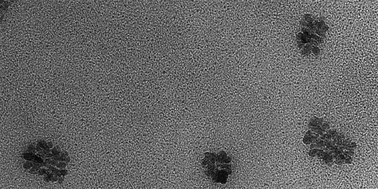Ionic liquids (ILs) have attracted tremendous interest in the recent past for their potential in many chemical fields. The current report explores the effects of a set of ILs based on the 1-ethyl-3-methyl-imidazolium cation and different anions on the formation of gold nanoparticles. X-Ray diffraction finds face-centered cubic gold in all cases, but transmission electron microscopy (TEM) shows that there are distinct differences in particle formation and stabilization with the ethyl sulfate (ES), trifluoromethanesulfonate (TfO) and methanesulfonate (MS) anions. With the MS anion, nanoparticles with diameters between 5 and 7 nm form, which increasingly aggregate at higher reaction temperatures. With TfO, also small 5 to 7 nm particles form, but only at low temperatures. Above ca. 160 °C, large, ill-defined and aggregated particles form. With ES, polydisperse samples form at all temperatures except 160 °C. In this case the nanoparticles appear often surrounded by an IL film, which appears to stabilize individual, ca. 15 to 20 nm particles. Dynamic light scattering and UV/Vis spectroscopy further show that in suspension the particles are, much like seen in the TEM, more strongly aggregated with higher reaction temperatures. In summary, the results suggest that there are very specific IL–gold interactions that are responsible for the formation of gold particles with an IL-specific shape, size, and aggregation behavior.


 Please wait while we load your content...
Please wait while we load your content...